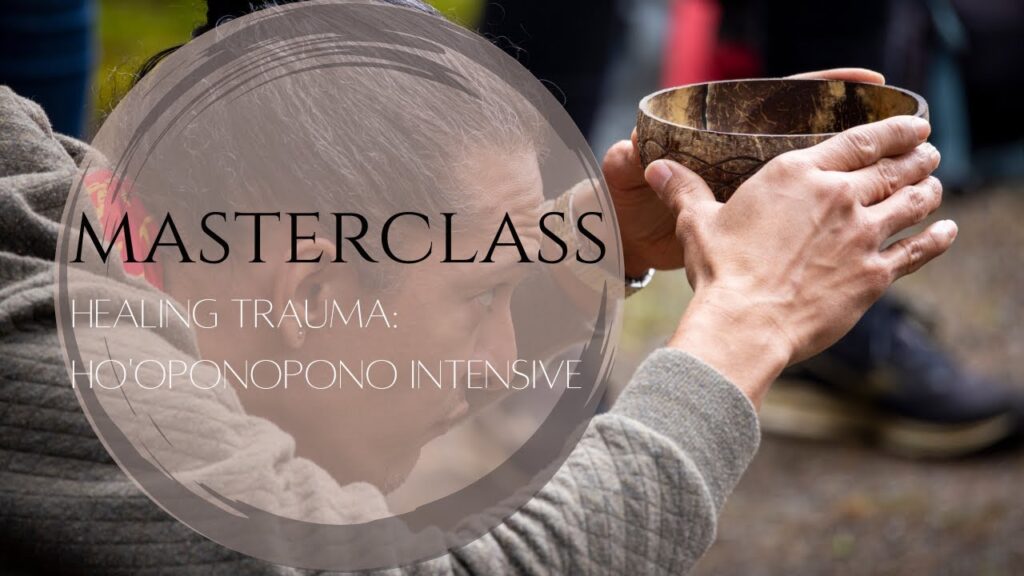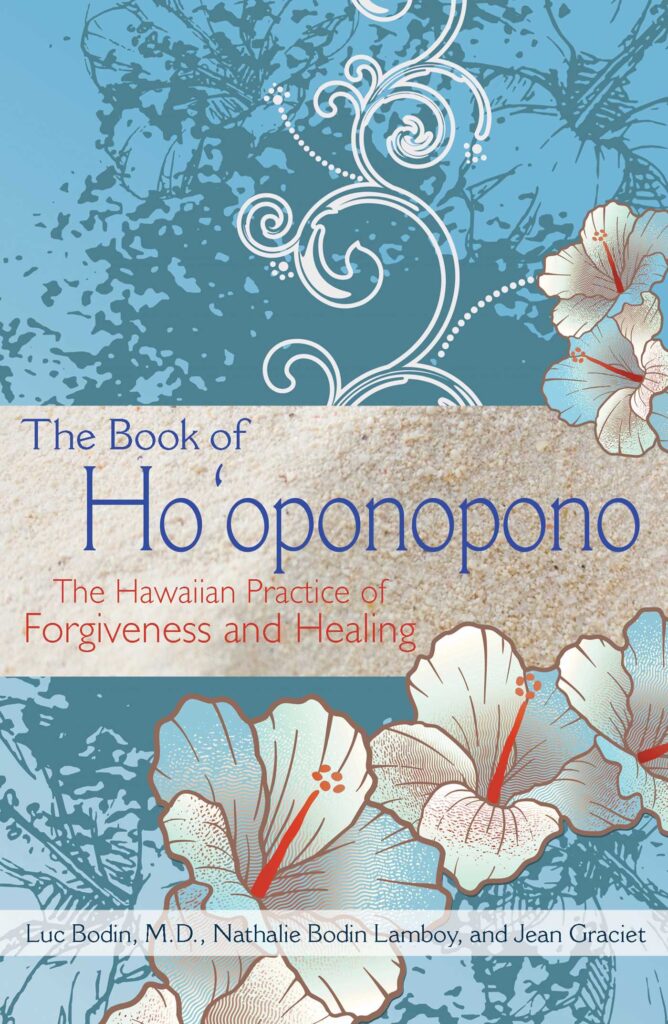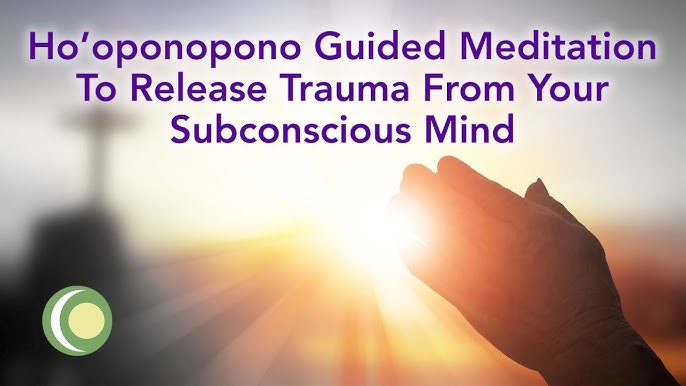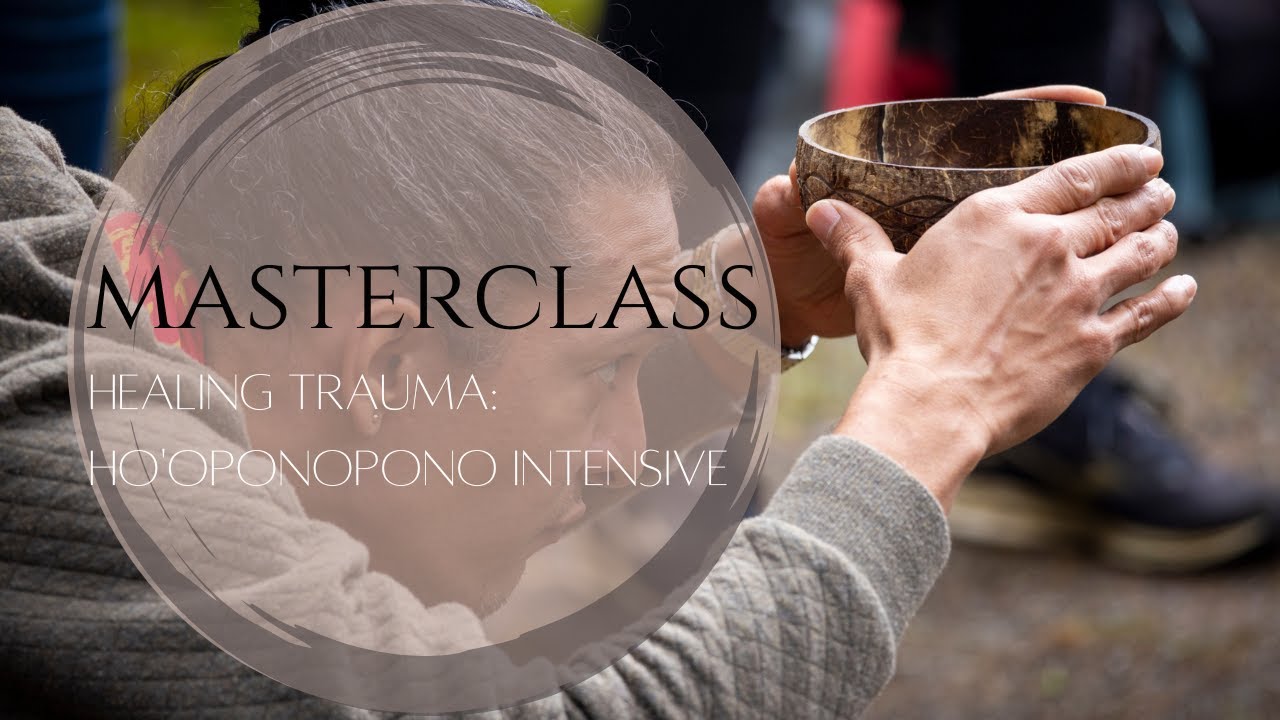Trauma can leave deep scars, affecting our emotional and mental well-being. When faced with such overwhelming experiences, we often search for ways to heal and find inner peace. That’s where Ho’oponopono comes in. This traditional Hawaiian practice focuses on forgiveness, reconciliation, and letting go of past hurts. But can it truly help in dealing with trauma? In this article, we explore the potential benefits of Ho’oponopono and how it might provide a path to healing and recovery.

Understanding Trauma
Definition of Trauma
Trauma can be defined as a psychological and emotional response to an event or an experience that is deeply distressing or disturbing. These events or experiences can be either one-time incidents or recurring situations that cause significant harm and overwhelm an individual’s ability to cope. Traumatic events can range from physical or emotional abuse, natural disasters, accidents, witnessing violence, or experiencing the loss of a loved one. Trauma can have long-lasting effects on an individual’s mental, emotional, and physical well-being.
Types of Trauma
There are various types of trauma that individuals may encounter, each with its unique characteristics and impacts.
-
Acute Trauma: This type of trauma refers to a single incident or a brief period of intense stress, such as a car accident or a physical assault.
-
Chronic Trauma: Chronic trauma involves exposure to multiple traumatic events or ongoing traumatic experiences, such as living in a war zone, enduring domestic violence, or experiencing prolonged abuse.
-
Complex Trauma: Complex trauma occurs when an individual experiences multiple and extensive traumatic events over an extended period, usually in childhood or adolescence. This type of trauma often involves interpersonal trauma, such as child abuse, neglect, or witnessing domestic violence.
-
Post-Traumatic Stress Disorder (PTSD): PTSD is a specific mental health disorder that can develop after exposure to a traumatic event. It is characterized by intrusive thoughts, flashbacks, nightmares, hypervigilance, and avoidance behaviors. PTSD can severely impact an individual’s daily functioning and quality of life.
Understanding the different types of trauma is crucial in exploring how Ho’oponopono, a traditional Hawaiian practice, can support individuals in their healing journey.
Introduction to Ho’oponopono
Origin and Meaning of Ho’oponopono
Ho’oponopono is an ancient Hawaiian healing practice that focuses on reconciliation, forgiveness, and taking responsibility for one’s actions and their consequences. The word “Ho’oponopono” translates to “to make right” or “to rectify an error.” It has roots in the Hawaiian culture and was traditionally used to resolve conflicts within families or communities and restore balance and harmony.
Principles of Ho’oponopono
Ho’oponopono is based on several core principles that form its foundation:
-
Self-Responsibility: Ho’oponopono emphasizes personal accountability for one’s thoughts, actions, and reactions. It underscores the importance of taking ownership of one’s role in creating or contributing to challenging situations or relationships.
-
Forgiveness and Reconciliation: Forgiveness is a central aspect of Ho’oponopono. By acknowledging the need for forgiveness and seeking reconciliation, individuals can release resentments, grudges, and negative emotions that may be holding them back.
-
Letting Go of Limiting Beliefs: Ho’oponopono teaches individuals to recognize and release limiting beliefs that contribute to their suffering and hinder personal growth. By letting go of these beliefs, one can create space for healing and transformation.
-
Unconditional Love and Gratitude: The practice of Ho’oponopono encourages individuals to cultivate a mindset of unconditional love and gratitude towards themselves and others. This mindset promotes healing, compassion, and increased self-awareness.
Understanding the principles behind Ho’oponopono sets the stage for exploring how this ancient practice can be beneficial in dealing with trauma.
The Connection between Ho’oponopono and Trauma
Healing Trauma through Ho’oponopono
Ho’oponopono offers a unique approach to healing trauma by addressing the underlying emotional and psychological wounds associated with traumatic experiences. This practice acknowledges the interconnectedness between individuals and the environment around them, recognizing that personal issues can affect the collective whole.
Through the practice of Ho’oponopono, individuals can engage in self-reflection, taking responsibility for their healing and well-being, and seeking forgiveness for any past actions or thoughts that may have contributed to their trauma. By doing so, the practice aims to restore a sense of inner peace, allowing individuals to move forward from their traumatic experiences.
Role of Ho’oponopono in Emotional Release
Traumatic events often provoke intense emotional responses, such as fear, anger, sadness, and guilt. Ho’oponopono provides a framework for individuals to acknowledge and process these emotions in a safe and supportive manner. By embracing the practice’s principles and techniques, individuals can cultivate a greater sense of emotional release and find solace in the process.
Ho’oponopono encourages individuals to explore and address the root causes of their trauma, allowing them to confront painful memories, beliefs, and emotions. Through forgiveness, reconciliation, and letting go of limiting beliefs, individuals can experience emotional healing and a greater sense of empowerment.
Techniques in Ho’oponopono for Dealing with Trauma
Ho’oponopono Meditation
Meditation is a fundamental technique in Ho’oponopono that allows individuals to quiet their minds, connect with their inner selves, and create a space for healing. During Ho’oponopono meditation, individuals typically focus on repeating specific phrases or mantras that promote self-forgiveness, reconciliation, and healing.
The meditation practice involves finding a quiet and comfortable space, closing the eyes, and focusing on deep, intentional breathing. Individuals may choose to repeat phrases such as “I’m sorry, please forgive me, thank you, I love you” or any other mantras that resonate with their healing journey. This repetition can help release negative emotions associated with trauma and promote a sense of emotional well-being.
Self-Identity Ho’oponopono Mantra
The Self-Identity Ho’oponopono Mantra is a powerful tool for addressing trauma and its associated wounds. The mantra consists of four phrases: “I love you, I’m sorry, please forgive me, thank you.” By repeating these phrases or silently stating them within, individuals can connect with their inner selves and the divine energy, seeking healing and forgiveness.
This mantra serves as a reminder that individuals are responsible for their own healing and well-being. Through self-compassion, acknowledging past actions or thoughts, seeking forgiveness, and expressing gratitude, individuals can foster a sense of profound healing and transformation.

Benefits of Ho’oponopono in Trauma Healing
Restoring Emotional Well-being
Ho’oponopono offers a pathway towards restoring emotional well-being for individuals who have experienced trauma. By actively engaging in the practice’s principles and techniques, individuals can release negative emotions, transform limiting beliefs, and create space for emotional healing.
The act of seeking forgiveness, both from oneself and others, allows individuals to let go of the emotional baggage associated with trauma. This release fosters a sense of emotional balance, leading to increased self-awareness, self-acceptance, and overall emotional well-being.
Promoting Self-Forgiveness and Acceptance
Traumatic experiences often leave individuals with a sense of guilt, shame, or self-blame. Ho’oponopono provides a framework for individuals to practice self-forgiveness and acceptance. By acknowledging and taking responsibility for their actions, individuals can begin to release the burden of self-blame, fostering a greater sense of self-compassion and self-love.
Through the practice of Ho’oponopono, individuals can develop a more forgiving and accepting attitude towards themselves. This shift allows them to move beyond the trauma and embrace their inherent worthiness, promoting healing and personal growth.
Case Studies: Ho’oponopono and Trauma Recovery
Testimony 1: Overcoming Childhood Trauma
Sarah, a survivor of childhood abuse, embarked on a journey of healing through Ho’oponopono. With the guidance of a qualified practitioner, she began incorporating Ho’oponopono meditation and the self-identity mantra into her daily routine. Through consistent practice, Sarah experienced a profound shift in her emotional well-being.
Ho’oponopono allowed Sarah to acknowledge the pain and trauma she had endured while empowering her to take responsibility for her healing. By actively engaging in forgiveness practices, Sarah gradually released the deep-rooted emotions and limiting beliefs associated with her traumatic past. With time, Sarah was able to reclaim her sense of self-worth and embrace a future filled with love, forgiveness, and personal growth.
Testimony 2: Healing from Post-Traumatic Stress Disorder
Jason, a military veteran, struggled with post-traumatic stress disorder (PTSD) and the debilitating symptoms it brought. Seeking alternative approaches to complement his conventional therapy, Jason discovered the potential benefits of Ho’oponopono in his trauma recovery.
Through the practice of Ho’oponopono meditation and the self-identity mantra, Jason found solace and emotional release. The repetition of the mantra became a powerful tool for self-compassion and forgiveness as he worked through his traumatic experiences. By incorporating Ho’oponopono into his healing journey, Jason experienced a reduction in the severity of his PTSD symptoms, allowing him to regain a sense of control over his life and fostering hope for the future.

Ho’oponopono as a Complementary Approach for Trauma Treatment
Combining Ho’oponopono with Traditional Therapy
Ho’oponopono can be a valuable complementary approach to traditional therapy when dealing with trauma. While professional therapy provides essential guidance and support, Ho’oponopono can serve as a personal practice that nurtures self-reflection, forgiveness, and emotional healing.
By combining Ho’oponopono with traditional therapy, individuals can enhance their healing journey. The practice’s principles and techniques can deepen self-awareness, promote self-responsibility, and support emotional release, amplifying the benefits of therapy and facilitating long-lasting healing.
Integration of Ho’oponopono in Trauma-Informed Care
Ho’oponopono can also be integrated into trauma-informed care approaches, which prioritize understanding and responding to the impact of trauma on individuals’ lives. By incorporating the principles of Ho’oponopono into trauma-informed care practices, such as fostering safety, empowerment, and cultural sensitivity, professionals can enhance the healing process for trauma survivors.
Trauma-informed care practices that embrace the philosophy of Ho’oponopono encourage collaboration, respect, and empathy between practitioners and individuals seeking healing. This integration can help create a nurturing and empowering environment for trauma survivors, promoting their overall well-being and long-term recovery.
Criticisms and Limitations of Ho’oponopono in Trauma Healing
Lack of Scientific Evidence
One criticism of Ho’oponopono in trauma healing is the lack of extensive scientific evidence that specifically examines its effectiveness. While anecdotal evidence and individual testimonies support its potential benefits, there is a need for rigorous scientific studies to validate and understand its mechanisms.
Further research exploring the impact of Ho’oponopono on trauma healing, both in controlled settings and real-world applications, would contribute to a more comprehensive understanding of its efficacy.
Not a Replacement for Professional Therapy
It is important to note that Ho’oponopono should not be seen as a standalone replacement for professional therapy and medical intervention. While it can be an effective complementary practice, individuals experiencing trauma should seek and engage in appropriate professional support.
Trauma healing often requires a holistic approach that combines various therapeutic modalities, including but not limited to, cognitive-behavioral therapy, eye movement desensitization and reprocessing (EMDR), and medication. Ho’oponopono can play a valuable role in this comprehensive approach, but it is essential to work with qualified therapists and healthcare providers to address all aspects of trauma.
Guidelines for Practicing Ho’oponopono in Trauma Healing
Consulting with a Qualified Practitioner
To ensure the safe and effective practice of Ho’oponopono in trauma healing, consulting with a qualified practitioner is highly recommended. A skilled practitioner can provide guidance, support, and expertise to individuals navigating their healing journey.
A qualified practitioner can help tailor Ho’oponopono techniques to the specific needs of individuals, ensuring that they engage in the practice in a way that maximizes its benefits and minimizes potential risks. They can also provide a safe and non-judgmental space for individuals to explore and process their traumatic experiences while incorporating Ho’oponopono techniques.
Commitment to Personal Growth and Self-Responsibility
Practicing Ho’oponopono requires a commitment to personal growth and self-responsibility. To effectively incorporate Ho’oponopono into trauma healing, individuals must be open to self-reflection, acknowledging their role in their healing journey, and actively engaging in forgiveness practices.
Committing to personal growth also involves consistency in the practice. Establishing a regular routine for meditation, mantra repetition, and emotional release exercises can contribute to sustained healing and transformation.
Conclusion: The Potential of Ho’oponopono in Trauma Recovery
Ho’oponopono holds significant potential as a complementary approach for trauma recovery. Its principles and techniques, rooted in forgiveness, reconciliation, and self-responsibility, provide individuals with a framework for healing emotional and psychological wounds associated with trauma.
By embracing the tenets of Ho’oponopono and incorporating its practices into trauma-informed care, individuals can experience profound emotional healing, increased self-awareness, and a renewed sense of empowerment. While Ho’oponopono may have its limitations and require further scientific exploration, its ability to restore emotional well-being and promote self-forgiveness makes it a promising tool in the journey towards trauma recovery.
Incorporating Ho’oponopono as a healing practice offers individuals the opportunity to recognize the power of forgiveness, the transformative potential of love, and the importance of self-acceptance in their ongoing healing and personal growth.

